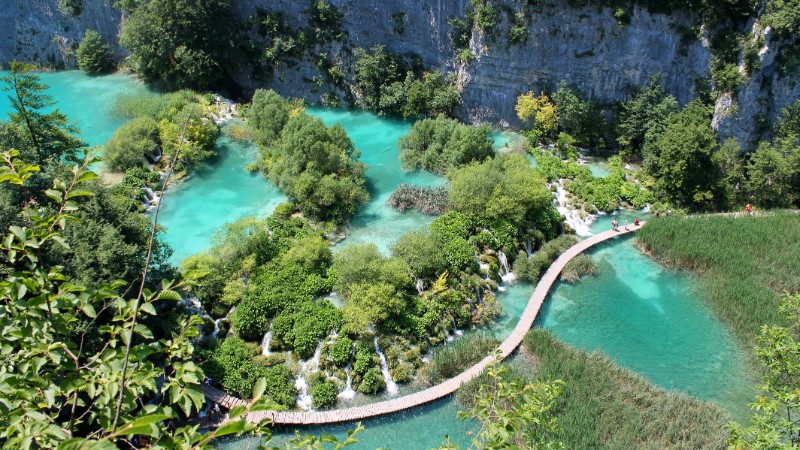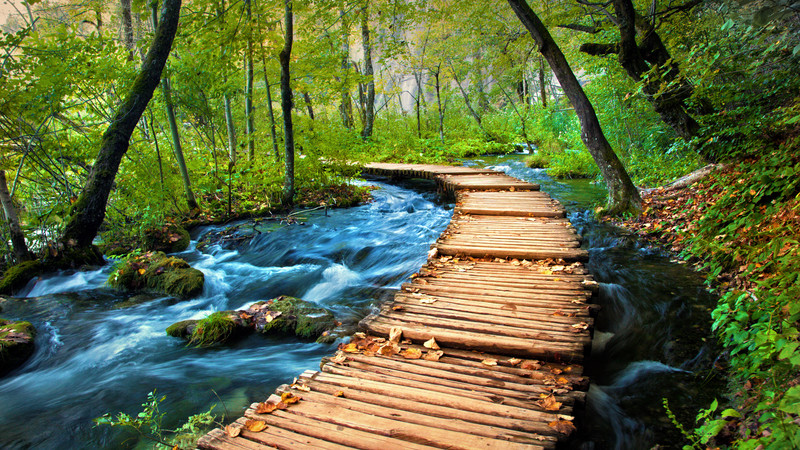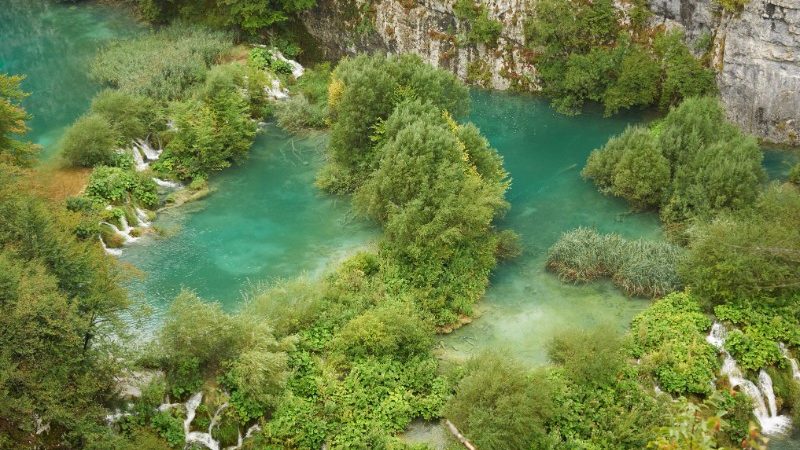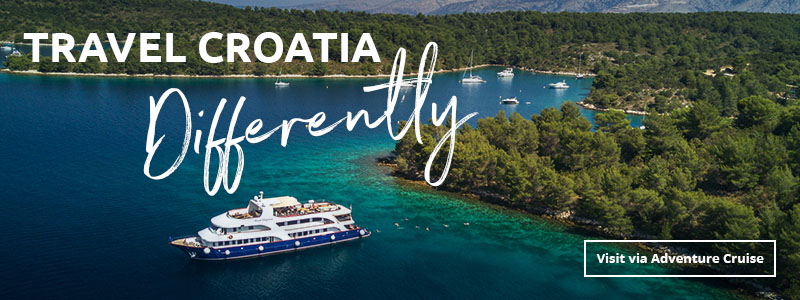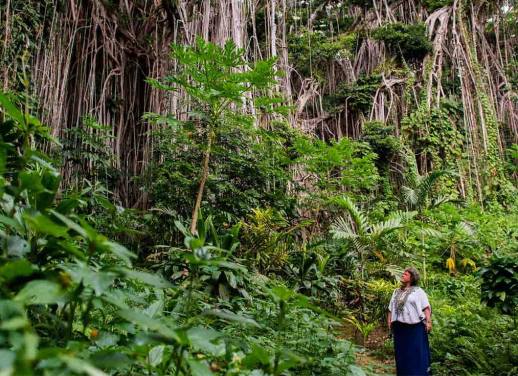Plitvice Lakes in Croatia is one of the world’s great natural wonders, a lush and pristine valley with 16 dazzling terraced lakes, 90 waterfalls and several kilometres of boardwalk. Often described as the most beautiful national park in Europe, Plitvice regularly makes lists of undiscovered gems or hidden secrets of Europe.
Unfortunately, it’s no longer undiscovered or hidden, with around 1.2 million visitors a year and 15,000 tourists descending on it a day in high season. In fact, Plitvice is fast becoming a victim of its own popularity, so if you want to soak up the natural beauty and serenity you need to go in armed with a plan.
The park’s history
A tourist attraction since the late 19th century, Plitvice Lakes is the oldest national park – and only UNESCO World Heritage site – in Croatia, and was officially established in 1949. In the 1960s, a number of Spaghetti Westerns were filmed here, including the (quite poorly) overdubbed ‘The Treasure in Silver Lake’.
Plitvice Lakes was also ground zero during the 1991 civil war, when rebel Serbs took over the park’s headquarters. It was here that the very first casualty of the war, Croatian park policeman Josip Jović, was killed on Easter Sunday that year. The four years or so the Serbs held the park saw almost no tourism, which allowed the flora and fauna to recover. They mark the war annually with a ceremony in the park.
READ MORE: 10 REASONS WHY ZAGREB SHOULD BE YOUR NEXT CITY BREAK
Why is the water so clear?
The mineral composition of Plitvice creates an array of stunning colours in the lakes, from teal to azure, green, grey and blue. The crystal clear water provides a brilliant view of some extremely fat fish. The water itself is high mountain runoff and, because the water calcifies everything it touches, there’s no mud or algae, which keeps the water clear. While it looks enticing, swimming is prohibited.
When should I go?
If possible, plan a visit during Spring or Autumn and avoid high season in July and August. In the middle of the day, the boardwalks become congested with trudging tourists, trying to pass each other in different directions on the narrow path, mostly without handrails. Every so often, the entire line stops as someone attempts the perfect selfie with a waterfall behind them; don’t get upset about this, as you’ll probably end up doing it too.
(On that, park management has recently taken to Twitter to warn tourists to be careful when taking selfies. Last year a Canadian man attempting a selfie miraculously survived a 75 metre plunge from a popular viewpoint and in 2015 a 54 year old Slovakian tourist was killed in a fall attempting to take a selfie. So take care when getting that perfect shot.)
The boardwalks are usually jammed between 10am and 3pm, so try to get there just after the park opens at 7am (in summer), or take a late afternoon stroll. You can see a lot in 90 minutes, but schedule at least three or four hours to see most of the park. Nature lovers could easily spend a couple of days.
 What should I see?
What should I see?
Everything, if you can. Make sure to take the path to the right, about ten minutes after you arrive at Entrance One, to see the Big Waterfall (Veliki Slap), which is 78 metres high; there’s also a viewpoint at the top of the canyon above. Nearby, Sastavcj Waterfalls sees the Korana river drop down 25 metres. Barac Caves and the Šupljara cave are both literally and figuratively cool on a summer’s day.
The shuttle boat across the park’s biggest body of water, Lake Kozjak, is lovely, though it usually requires a bit of queuing.
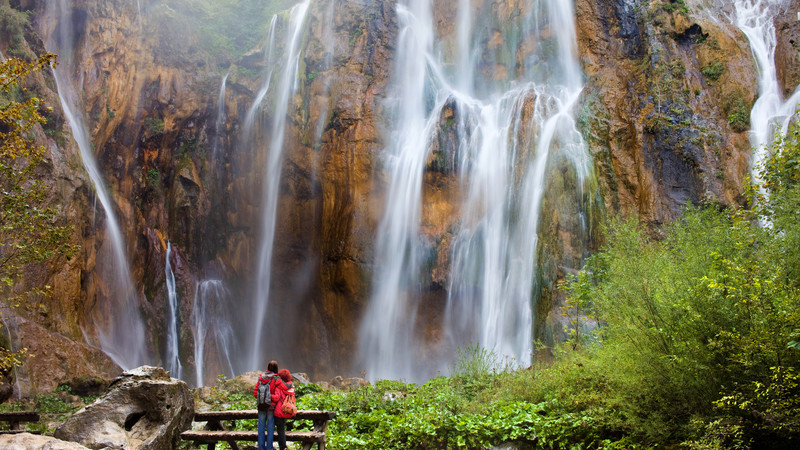
Image via Shutterstock
Which trail should I take?
There are eight different hiking trails of varying lengths. Trail H is popular and shows a good selection of the park; it’s about nine kilometres long and can be done in around four hours. Loop K (18.3 kilometres) is the most comprehensive and takes six to eight hours, while trail E can be done in around two hours. A and B focus on the lower lakes, E on the upper lakes, while F, H and K take you through the whole park.
READ MORE: CROATIA IN ONE WEEK: THE ULTIMATE GUIDE
How do I get there?
Many of Intrepid’s Croatian group tours head to Plitvice Lakes. If you are in Zagreb or Split there are frequent buses and day tours (it’s about 2.5 hours from Zagreb and 5 hours from Split). If possible, hire a car and stay overnight in the area to get the earliest possible start. It’s an easy trip, mostly on freeways and main roads, and car hire is surprisingly affordable in Croatia. A car will also provide a much larger range of accommodation than just the park lodges, with guest houses offering rooms for as little as 25 euros. After hitting the trails early in the morning, there’s enough time to drive down to the coast or head up to Zagreb. a day ticket to the park costs about 110 Croatian Kuna, or $22 AUD, depending on the time of year.
Eating in the park
The fast food restaurants in the park are best described as ‘uninspired’, so bring a picnic if you can. There’s a small supermarket at Entrance One, although the store in Rakovica has a larger selection if you are driving in from the north.
Ready to be charmed by Plitvice Lakes? Check out Intrepid’s range of small group tours through Croatia.
Feature image by Pascal Habermann on Unsplash.

